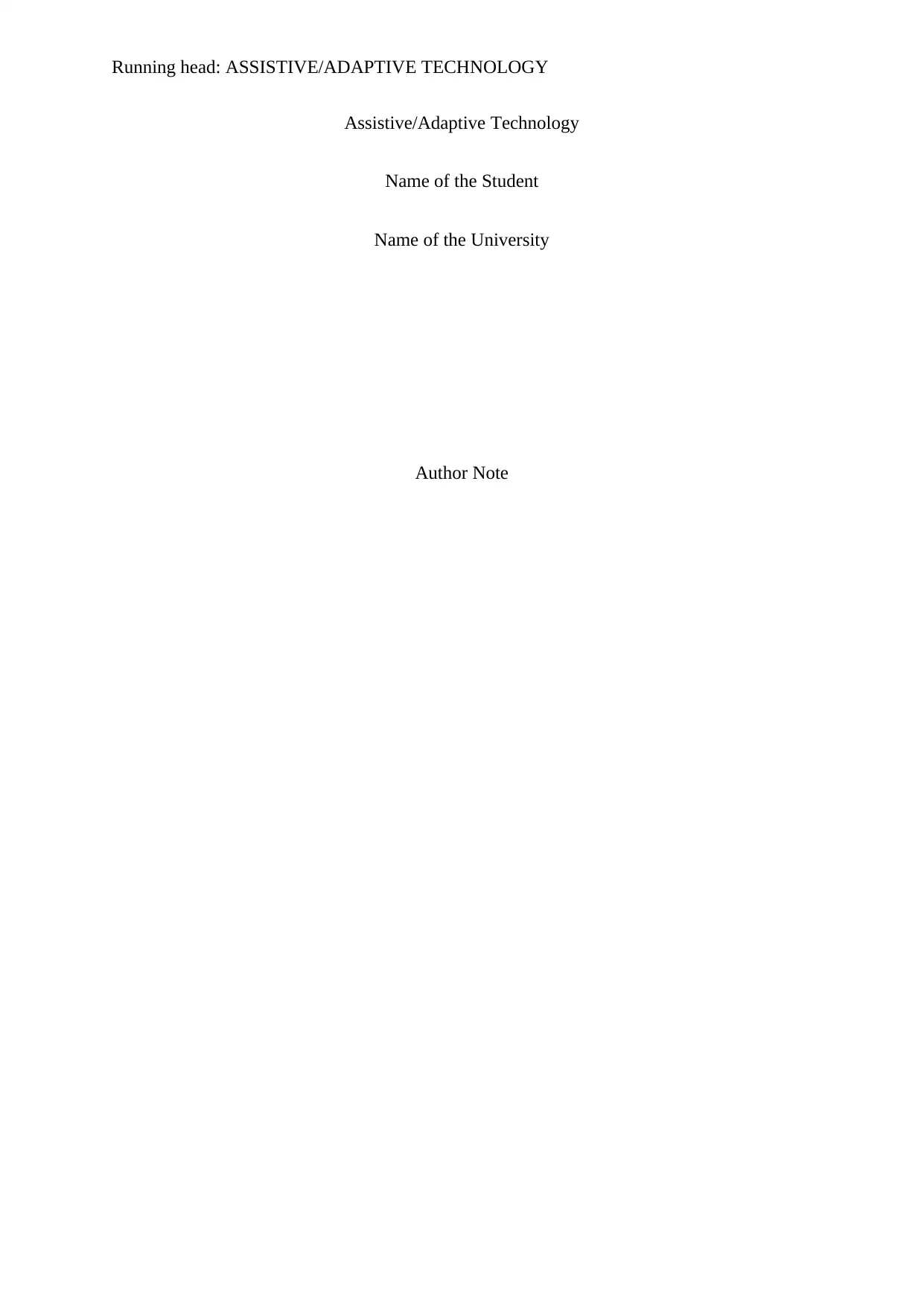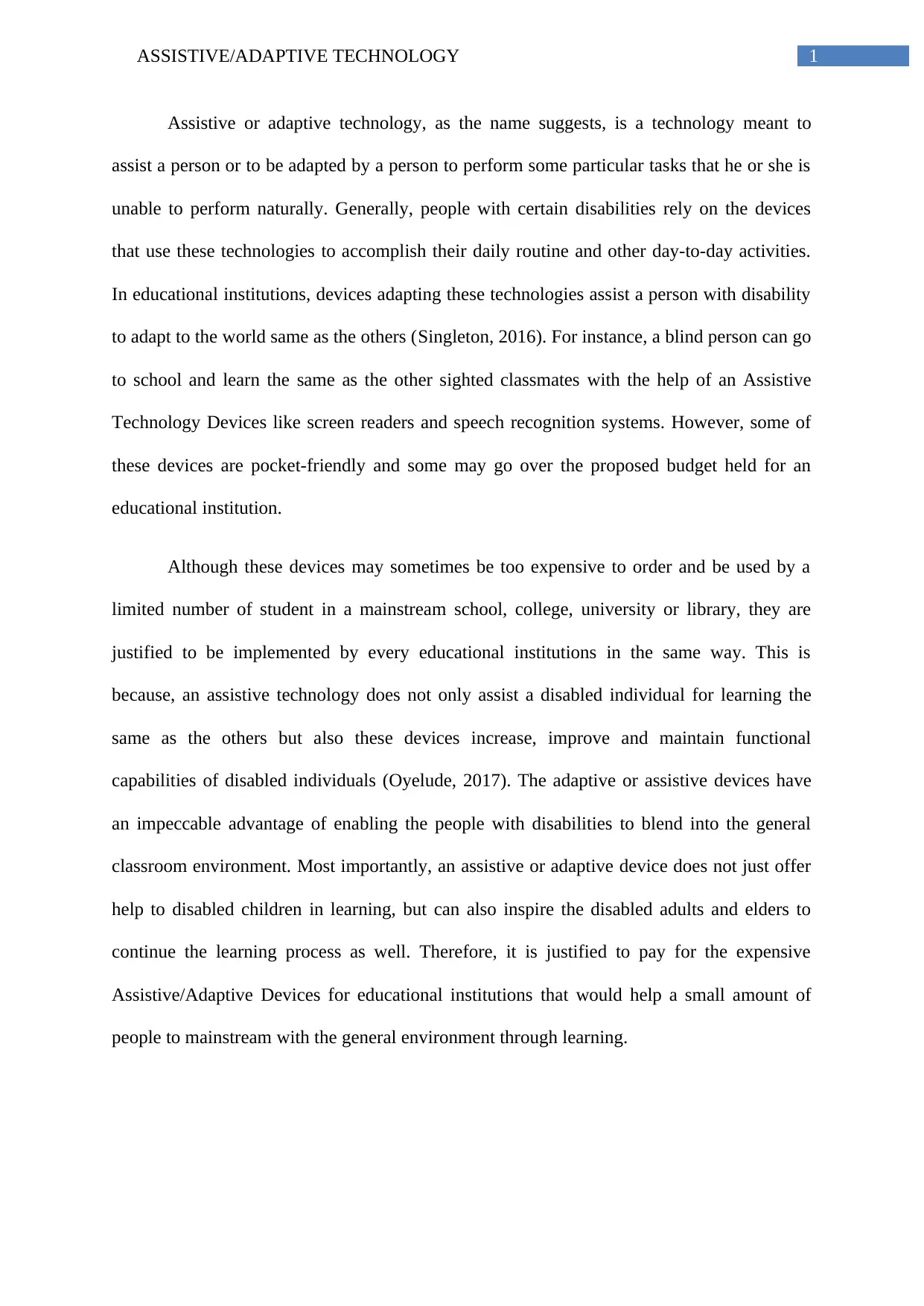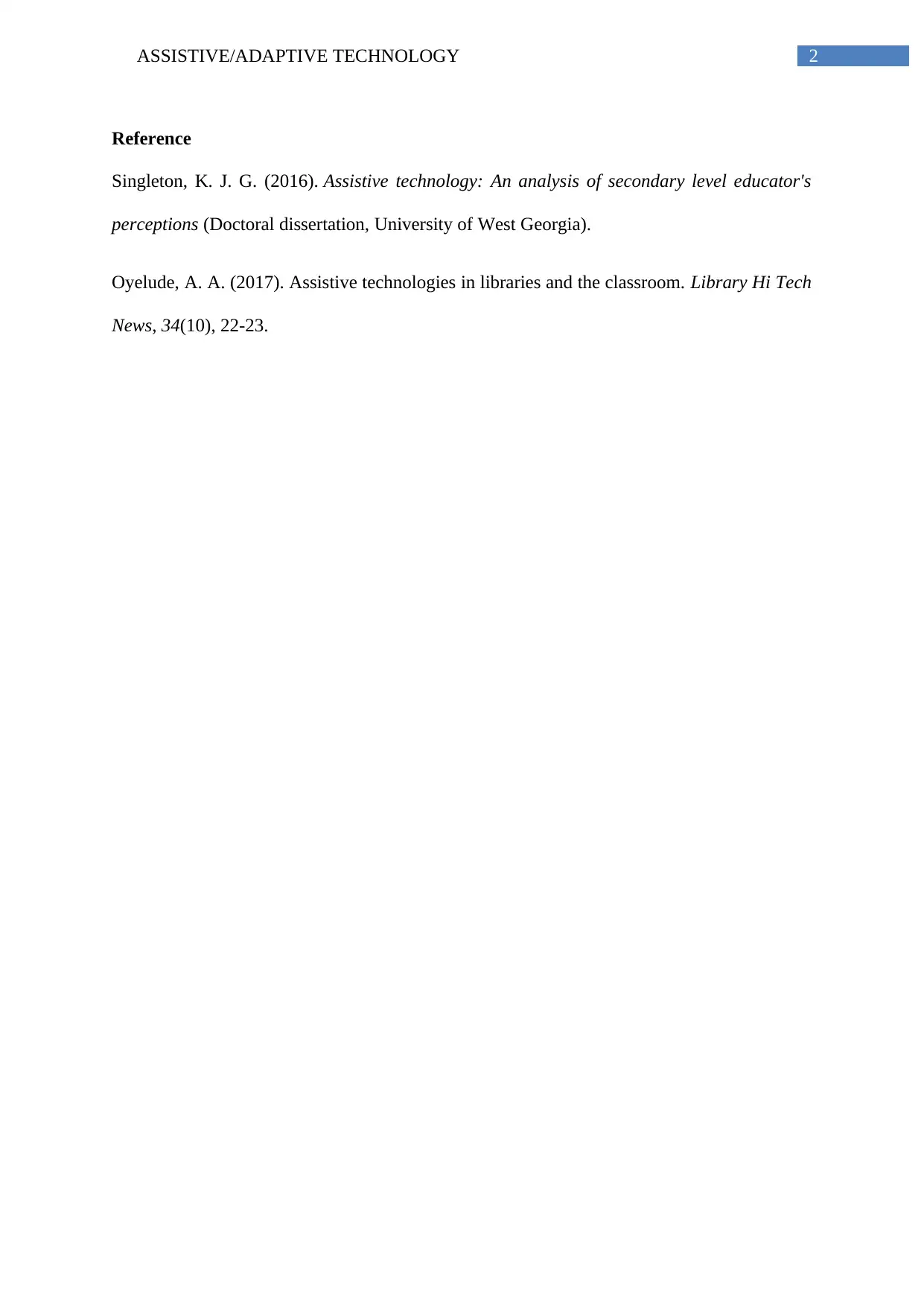Assistive Technology: A Report on Adaptive Technologies in Education
VerifiedAdded on 2021/04/24
|3
|407
|62
Report
AI Summary
This report discusses assistive and adaptive technologies in educational settings. It highlights the importance of these technologies in supporting students with disabilities, enabling them to participate fully in the learning environment. The report emphasizes that these technologies not only help disabled students but also encourage lifelong learning. It argues for the justification of investing in assistive technologies, even if they are expensive, to provide equal opportunities for all students. It discusses how assistive technologies such as screen readers and speech recognition systems help students with disabilities. The report also references the benefits of these technologies, including their ability to integrate disabled students into mainstream classrooms and encourage continued learning for adults. The report underscores the value of assistive technologies in enhancing functional capabilities and promoting inclusivity in educational institutions. It concludes by advocating for the implementation of these technologies across various educational levels, including schools, colleges, universities, and libraries.
1 out of 3










![[object Object]](/_next/static/media/star-bottom.7253800d.svg)